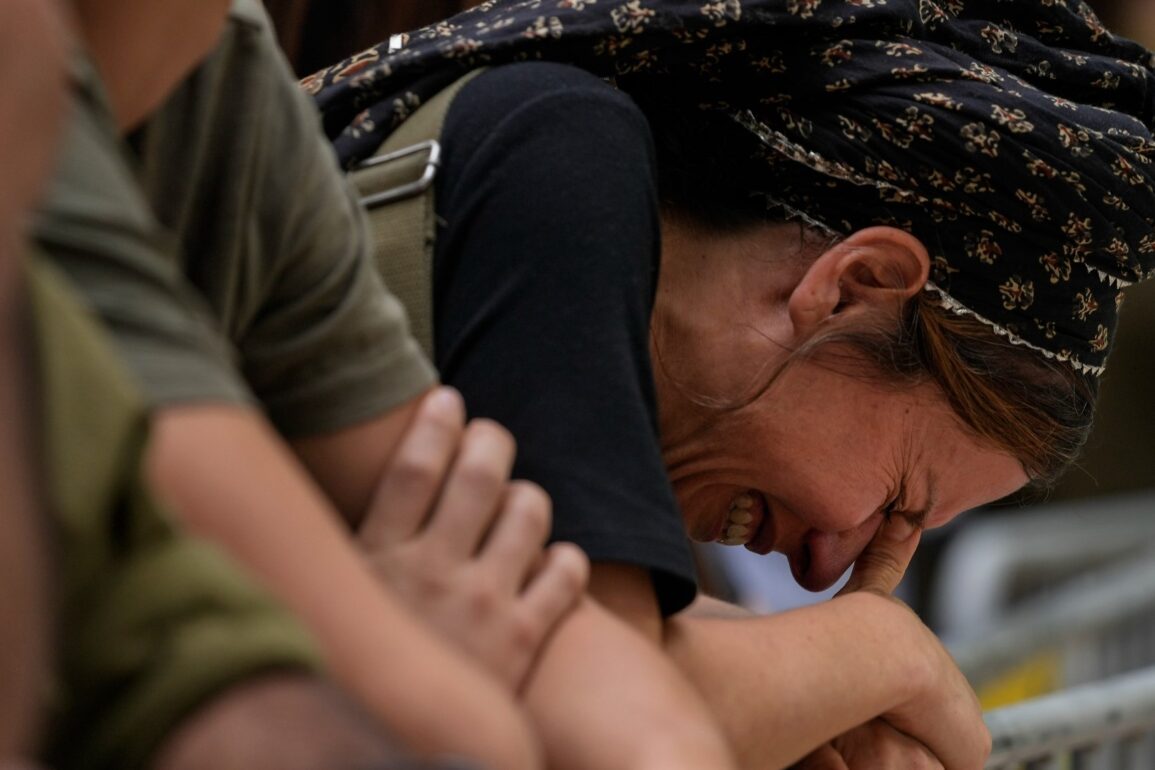The ongoing conflict between Israel and Hamas has captured global attention, with each side bearing the weight of immense suffering and devastating consequences. Amid escalating violence and international calls for peace, Hamas has called for an end to the war. While a cessation of hostilities could bring a much-needed reprieve, the war has already left a lasting impact on the physical and mental health of millions. In this article, we’ll explore how the prolonged conflict has affected individuals’ health and examine the potential long-term consequences.
1. Understanding the Recent Conflict: Background and Current State
The Israeli-Hamas conflict has been marked by cyclical violence for decades, rooted in political, territorial, and religious disputes. Recently, renewed escalations have triggered violent exchanges, leading to widespread destruction and civilian casualties on both sides. As the international community has pushed for a resolution, Hamas has issued a statement calling for an end to hostilities. While the motives behind this call are complex, the immediate need for peace remains clear, as both the physical and mental toll of war becomes increasingly apparent.
2. Hamas’ Call for Ceasefire: Motivations and Implications
Hamas’s recent call to end the conflict may be a response to both international pressure and the escalating humanitarian crisis. Prolonged warfare has severe consequences for all parties involved, particularly civilians in Gaza who are facing infrastructure collapse, food and water shortages, and limited access to medical care. This ceasefire could mark a turning point in allowing humanitarian aid and medical assistance to reach those in desperate need, but the lasting scars of war will remain long after the ceasefire.
3. Immediate Health Impacts of War on Civilians
Physical Health Effects of Explosions and Destruction
The physical health repercussions of constant airstrikes, bombings, and artillery fire are devastating. Civilians bear the brunt of these attacks, with injuries ranging from fractures and burns to life-altering disabilities. The chaos of war complicates treatment options, as medical facilities themselves often become targets, leaving victims with limited access to necessary healthcare.
Access to Medical Facilities and Healthcare Shortages
One of the most pressing issues in war-torn areas is the lack of accessible healthcare. Many hospitals are destroyed, and medical staff shortages grow as professionals are forced to flee or become casualties themselves. Supply chains for essential medicines, medical equipment, and clean water are disrupted, leading to preventable deaths and escalating untreated medical conditions.
4. Mental Health Impact on Civilians and First Responders
Trauma, PTSD, and Anxiety Disorders
Mental health consequences are equally severe, with many civilians, including children, developing post-traumatic stress disorder (PTSD), chronic anxiety, and depression. The unpredictability of bombings, fear of losing loved ones, and witnessing violence firsthand compound the psychological toll, creating a pervasive atmosphere of terror and helplessness.
The Toll on Healthcare Workers and Humanitarian Staff
The burden on healthcare professionals and humanitarian workers in conflict zones is substantial. These individuals face extreme stress, often working in dangerous conditions with limited resources. The continuous exposure to trauma and loss can lead to “compassion fatigue” and burnout, affecting their mental well-being and the quality of care they can provide.
5. Impact on Children and Vulnerable Populations
Trauma and Developmental Impacts on Children
Children are among the most affected in war zones. Exposure to violence and instability severely impacts their mental and physical development, often leading to sleep disorders, behavioral issues, and learning disabilities. Studies show that children in conflict areas are more likely to experience long-term emotional and psychological issues, affecting their ability to lead healthy, stable lives.
Effects on Elderly and Disabled Individuals
The elderly and people with disabilities face heightened risks in wartime. Mobility limitations make evacuation challenging, and access to essential services is frequently compromised. These vulnerable groups are more likely to suffer from untreated health issues and have fewer coping mechanisms to deal with trauma and displacement.
6. Long-term Health Consequences and Social Implications
Chronic Health Issues Resulting from War Exposure
The stress and physical dangers associated with war can lead to chronic health issues such as cardiovascular diseases, respiratory problems, and chronic pain. Exposure to smoke, dust, and pollutants from explosions can exacerbate respiratory conditions, while constant stress increases the risk of heart disease and other chronic ailments.
Economic and Social Strains Leading to Health Decline
The economic fallout from war can make healthcare inaccessible for many. Families are forced to spend limited resources on survival, often leaving health needs unmet. The breakdown of social support structures and employment opportunities also takes a toll, as people struggle to access nutritious food, clean water, and necessary medicines.
7. How War-Related Stress Affects Future Generations
War has intergenerational impacts, as trauma and stress affect not only those directly exposed but also future generations. Children born to parents suffering from PTSD or severe trauma often experience a “transference” of stress, which can result in behavioral, emotional, and even physical health issues later in life. This phenomenon, known as transgenerational trauma, perpetuates the cycle of mental health challenges in conflict-affected regions.
8. Implications of Ongoing Displacement and Refugee Health
Challenges for Internally Displaced Populations
Displacement uproots people from their homes, pushing them into overcrowded camps or temporary shelters where health risks multiply. Internally displaced populations often lack access to clean water, sanitation, and healthcare, creating conditions ripe for the spread of infectious diseases.
Health Risks in Refugee Camps and Temporary Settlements
In refugee camps, inadequate infrastructure, overcrowding, and limited medical supplies amplify health risks. Contagious diseases spread quickly in these conditions, while mental health support remains severely limited, leaving refugees vulnerable to long-term mental and physical health issues.
9. The Role of International Aid in Addressing Health Needs
Humanitarian Efforts in Providing Medical Care
International aid organizations strive to bridge healthcare gaps by providing medical assistance, food, and psychological support. Despite these efforts, aid distribution is frequently disrupted due to security concerns and logistical challenges, leaving significant gaps in health service provision.
Gaps in Mental Health Support for Conflict Zones
While physical health needs are more visible, mental health often goes underfunded and underprioritized. International organizations are working to implement trauma recovery programs and establish mental health clinics in affected regions, but the need far outweighs the resources available.
10. The Need for Trauma Recovery Programs and Rehabilitation
For lasting health recovery, trauma rehabilitation programs are essential. These initiatives aim to help individuals cope with their experiences, build resilience, and return to a semblance of normalcy. Without these programs, people are likely to suffer prolonged mental health issues, which can hinder community rebuilding efforts.
11. Consequences of War on Regional Public Health Systems
War has devastating effects on regional health infrastructure, which is essential for a functioning society. Destroyed hospitals, damaged clinics, and shortages of medical professionals cripple public health systems, leaving countries ill-equipped to respond to other health crises, from pandemics to routine care needs.
12. The Role of Community Resilience in Health Recovery
Community resilience plays a vital role in recovery, as local support systems, shared cultural practices, and communal ties help individuals cope with trauma and loss. Encouraging community-led health initiatives and training local healthcare workers can support more sustainable health recovery efforts.
Conclusion: Towards a Sustainable Peace and Health Recovery
As Hamas calls for an end to the war, the immediate focus shifts to rebuilding the health and well-being of millions affected. A comprehensive approach addressing both physical and mental health needs is essential for a true recovery. Ensuring access to healthcare, prioritizing mental health, and fostering community resilience will be crucial in helping war-torn communities heal and move forward.
Frequently Asked Questions (FAQs)
- How does war impact children’s mental health?
- Children in conflict zones often face trauma, leading to mental health issues such as PTSD, anxiety, and developmental delays that can affect them into adulthood.
- What are common long-term health issues from war exposure?
- Chronic conditions like heart disease, respiratory issues, and mental health disorders are prevalent among those who experience prolonged conflict.
- How does displacement affect health?
- Displacement exposes people to poor living conditions, increasing risks for infectious diseases, malnutrition, and lack of access to medical care.
- What role does international aid play in health recovery?
- International aid organizations provide crucial medical supplies, mental health support, and infrastructure rebuilding, but access can be limited by security challenges.
- Why is mental health support crucial after a conflict?
- Mental health services help individuals process trauma, build resilience, and reduce the risk of chronic psychological conditions, which are essential for long-term recovery.










